Kanban: Definition, 6 Rules, and its Benefits
Kanban is a crucial part of the Just in Time (JIT) system, which we discussed…
Sean Thobias
May 17, 2025A wide range of machinery is employed when handling and picking warehouse items. Warehousing equipment can be as primary as affordable trolleys or as large as conveyors for taking sizable orders. In the picker-to-goods system, warehouse operators commonly use pallet trucks, lift trucks, and racks.
Our previous articles discussed different strategies and methods for picking items in warehouses. Now, let’s focus on the equipment used during the picking process. This valuable information will help you choose the equipment that best fits your needs.
Read more: Understanding Warehouses: Definition and its Importance
To effectively manage warehouse operations, it’s crucial to have these six essential warehousing equipment pieces in place.
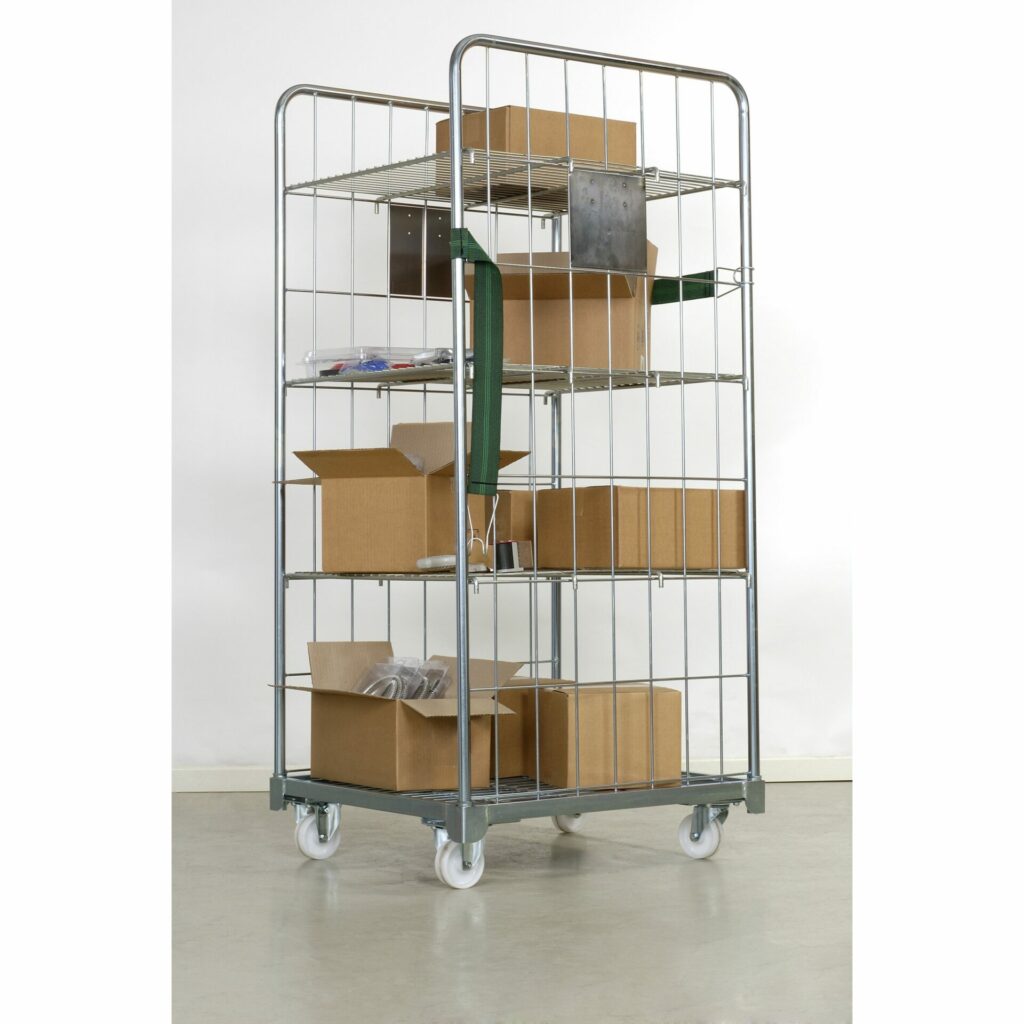
The first piece of equipment in a warehouse is the trolley/cage. The picker uses it to store items. They push the trolley along the aisles and use it as a shelf. Warehouse staff can also use the roll cage for transportation to avoid handling goods twice.
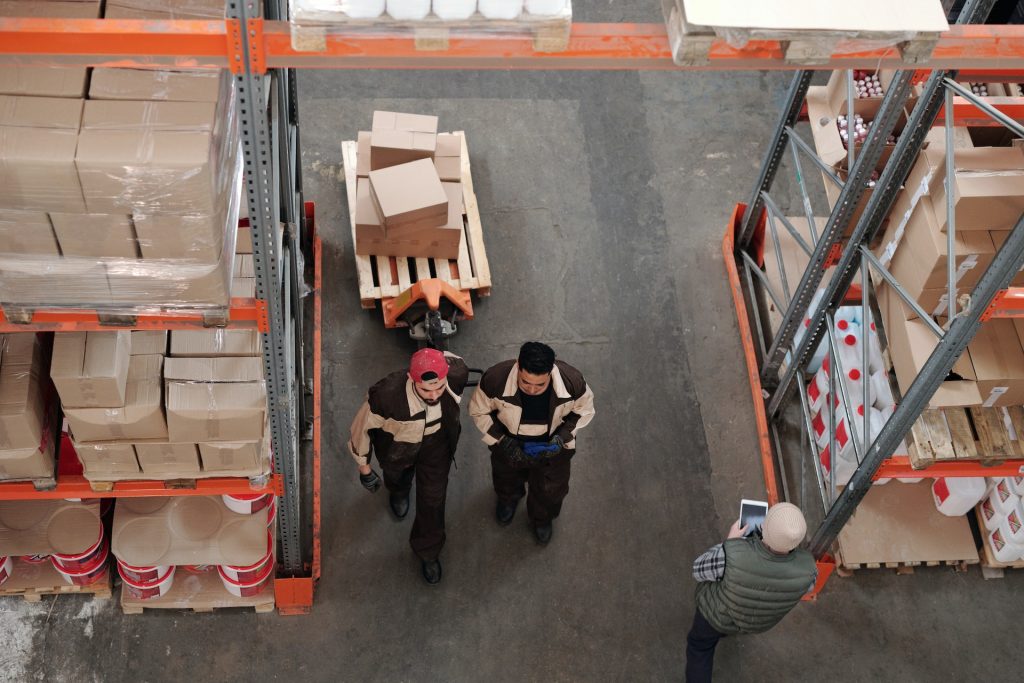
A pallet is a sturdy board that supports goods and keeps them stable while being lifted or moved with a forklift or similar tool. This warehousing equipment helps pickers handle goods more efficiently. There are three types of pallets:
To choose the right truck, consider the number of pallets you need to move per hour and the distance they have to travel in the warehouse.
Read more: Warehouse Manager: Roles and 10 Challenges to Overcome
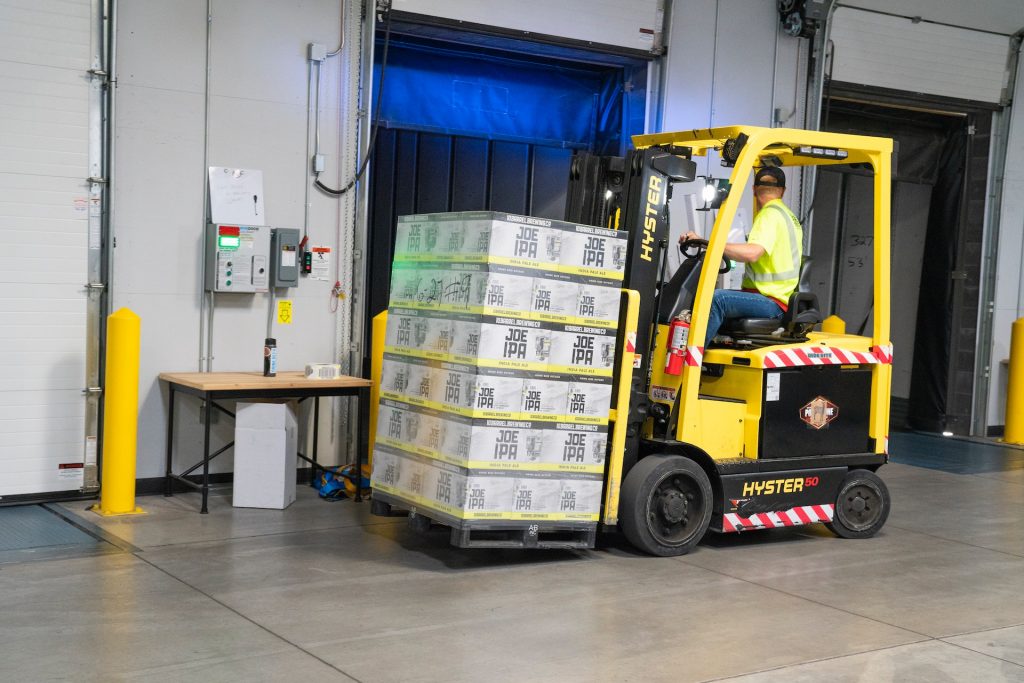
The warehouse utilizes counter-balance and reaches trucks as its equipment. These trucks actively lift pallets to a specific height during picking, enabling operators to avoid bending while placing boxes on the pallets. Additionally, the trucks serve the purpose of storing full pallets on shelves.
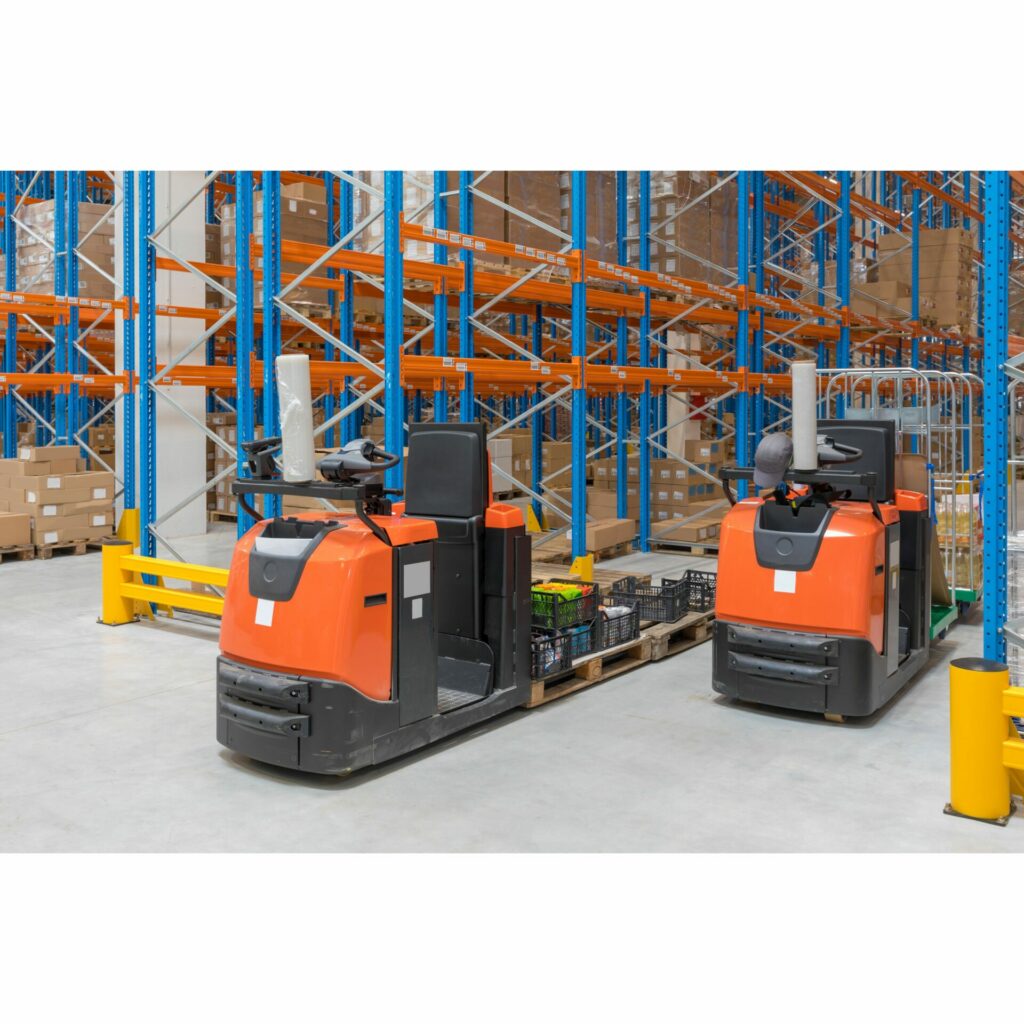
Low-Level Order Pickers (LLOP) are electric-powered warehouse machines that can simultaneously move two pallets to three roll cages along the picking aisle. These trucks work on the first and second levels. Towing tractors are great for moving things horizontally and picking orders at lower levels.
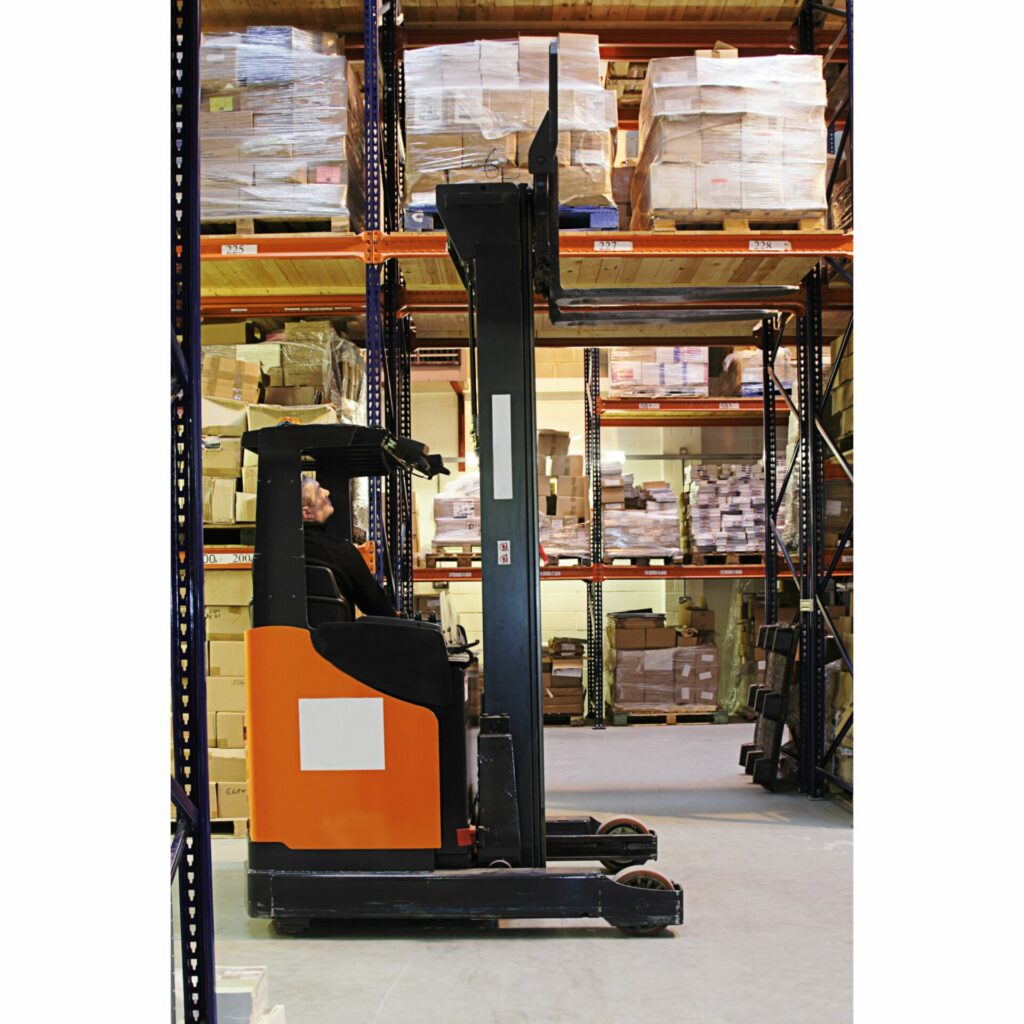
When you have many different products and insufficient space on the shelves, you need to get the products from storage above the ground. For this, you use high-level order pickers like the ones shown in the picture below.
This warehousing equipment is beneficial: it allows you to store many products in a small space using narrow aisles and trucks. HLOP can help you avoid moving things around using a random storage system.
However, there are some downsides to using these machines. The process of picking the products can be slower, and there is a risk of the aisles getting crowded. This system works best for operations with many slow-selling items and only a few goods needed per order.
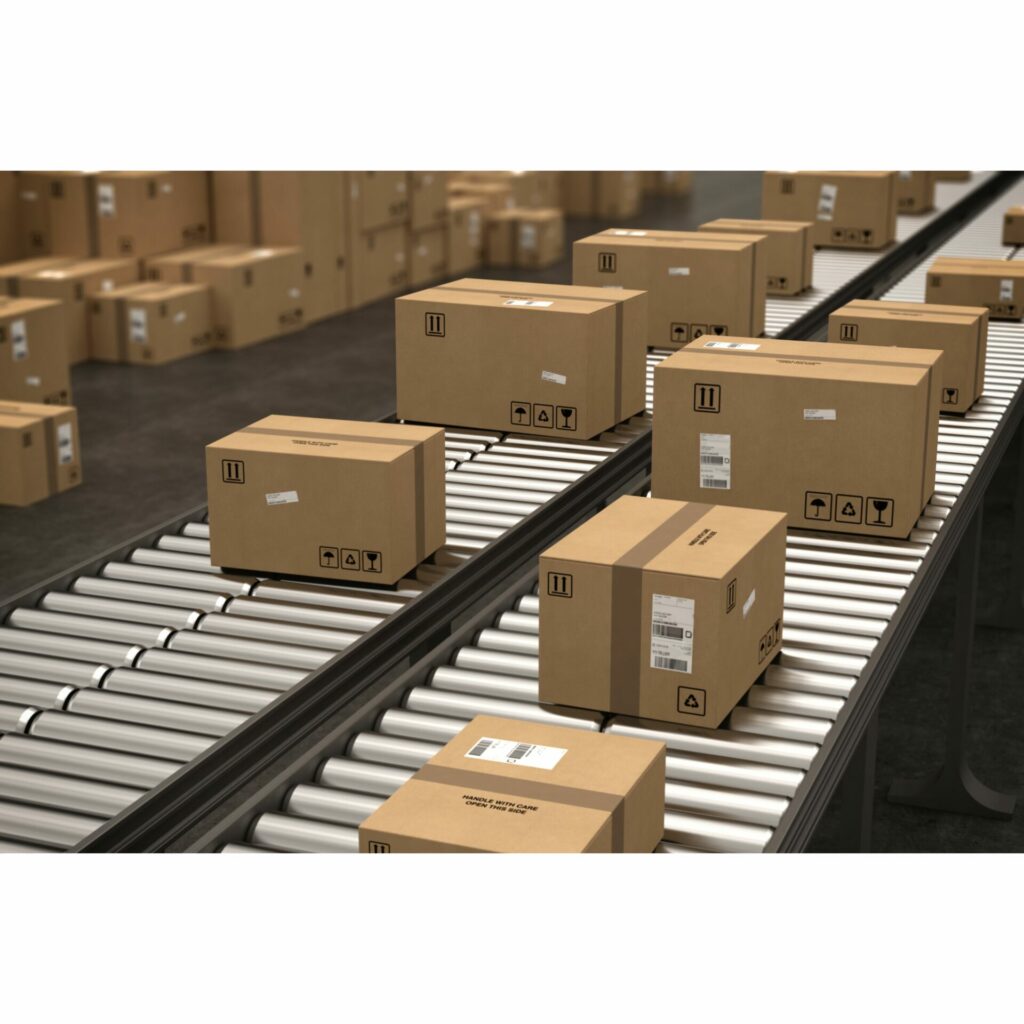
The last piece of warehousing equipment is the conveyor. It’s commonly used in the picking system to move products using either gravity or power. Conveyors are essential in goods-to-picker systems as they help transport boxes and totes between different areas and workstations.
Companies use powered conveyors to transport goods over long distances, utilizing belts, chains, blades, and rollers. Conversely, they employ gravity conveyors to move goods from the mezzanine floor to the shipping area, combining them with other items.
However, these conveyors have some disadvantages:
Companies can customize their picking strategies based on their specific requirements, resulting in variations in the types of picking and warehouse equipment needed.
Each picking method necessitates suitable warehouse equipment capable of handling all the associated processes. Therefore, companies must ensure that their warehouse conditions and budget align with the appropriate equipment.
Next, we will delve into the picking methods your company can implement.
Richard G. 2011. Warehouse Management. Great Britain: Kogan Page Limited.
Impact Insight Team
Impact Insights Team is a group of professionals comprising individuals with expertise and experience in various aspects of business. Together, we are committed to providing in-depth insights and valuable understanding on a variety of business-related topics & industry trends to help companies achieve their goals.
See how our ERP provides better value.
Speak with our consultant to explore how we can improve your accounting, processes, and people.
